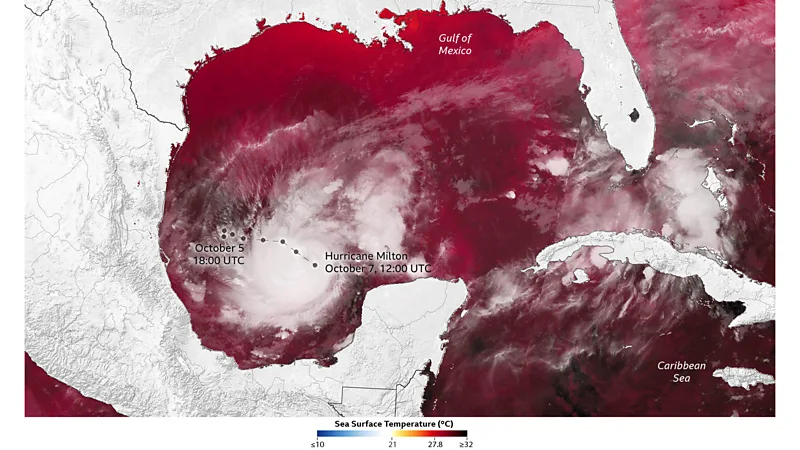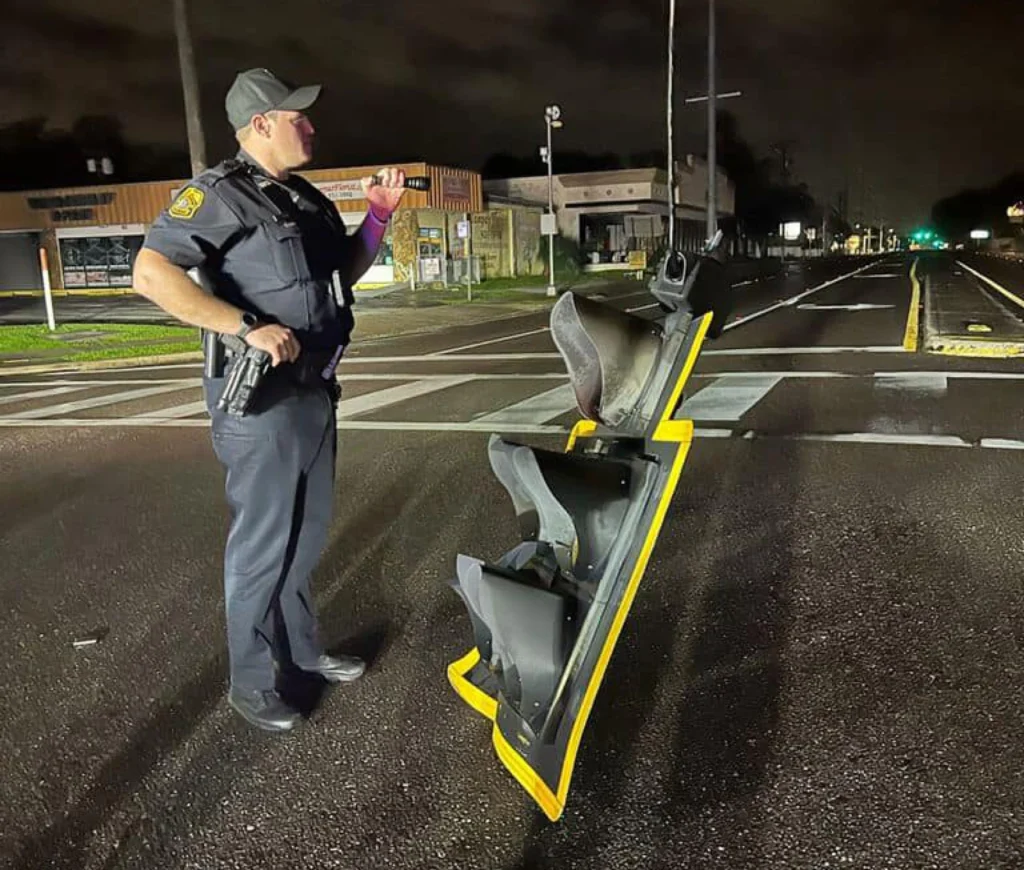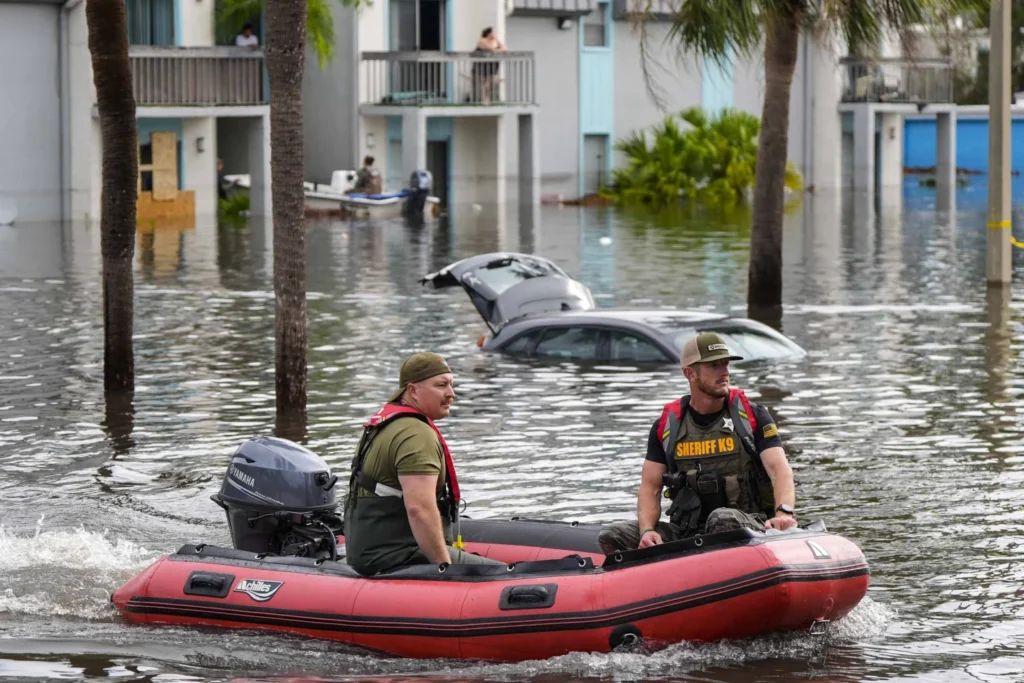Hurricane Milton is one of the most powerful storms to form over the Atlantic in recent years. The National Hurricane Center has warned that Milton will make landfall as an “extremely dangerous major hurricane” late on Wednesday night or early on Thursday morning. Packing powerful winds of up to 145mph (233km/h), Milton is expected to cause flash flooding, torrential rain and storm surges in Florida. Millions of residents are racing to evacuate as the category four storm barrels towards the state’s coastline.
Milton arrives less than two weeks after Hurricane Helene devastated the Gulf Coast and killed at least 225 people in Florida, Georgia, South Carolina, Tennessee, Virginia and North Carolina.

On 5 October, Hurricane Milton began life as a tropical storm in the south west of the Gulf of Mexico. The next day, its wind speed started to rapidly intensify – and by 7 October it had reached category five strength. Milton’s winds had increased from 80 to 175mph (129 to 282 km/h) in just 24 hours. It is now one of the fastest intensifying Atlantic storms on record.
Hurricane Milton wrought havoc across Florida, where it whipped up tornadoes, cut power for more than 3.3 million energy customers, put some 11 million people at risk of flooding and caused at least 10 deaths.
Milton was moving into the Atlantic Ocean on Thursday morning after making landfall the previous evening as a Category 3 storm in Siesta Key, roughly 70 miles south of Tampa

A massive natural disaster is approaching the United States. Hurricane Milton, now a Category 5 storm, is heading toward Florida. Currently classified as a Category 4 hurricane, it is advancing towards Florida with destructive force. The authorities are urging residents to prepare for the storm’s impact, which is expected to bring severe winds, heavy rains, and dangerous storm surges. Emergency services are on high alert, and evacuation orders have been issued for several areas. Hurricane Milton is anticipated to cause widespread damage as it moves closer to the coastline.
American authorities have warned of the potential damage and dangers posed by Hurricane Milton, which is currently moving at a speed of 250 kilometers per hour. The storm is passing near the northern coastline with sharp turns and is progressing toward what is being described as an extremely devastating natural disaster. Hurricane Milton is now considered the fourth most severe hurricane in U.S. history. Experts from the National Hurricane Center have stated that coastal areas could potentially experience destructive storm surges, posing a serious threat to life and property.

The storm surges from Hurricane Milton could reach up to 15 feet in coastal areas and up to 9 feet in urban regions. Many residents have already evacuated. Winds associated with the hurricane are blowing at speeds of 195 kilometers per hour. This catastrophic storm has already left 500,000 people without electricity. Hurricane Milton, now a Category 5 storm, is heading towards the U.S. state of Florida. It is expected to make landfall near the city of Tampa on Wednesday with full force, bringing 12-foot-high storm surges. Authorities have issued evacuation orders for 500,000 people in its path.
Governor DeSantis and President Biden have declared an emergency alert for Florida as Hurricane Milton intensifies. Winds associated with the storm are reaching speeds of 285 kilometers per hour. Just two weeks ago, Hurricane Helene struck the U.S. from the east, resulting in the deaths of 225 people, with hundreds still missing. The situation remains critical as Hurricane Milton threatens further devastation along the Florida coast. Authorities are urging residents to take all necessary precautions and follow evacuation orders to ensure safety.

Florida and other states; over 50,000 utility workers from as far as California; and highway patrol cars with sirens to escort gasoline tankers to replenish supplies so people could fill up their tanks before evacuating.
“Unfortunately, there will be fatalities. I don’t think there’s any way around that,” DeSantis said.
That occurred across the state before Milton even made landfall due to tornadoes. The Spanish Lakes Country Club near Fort Pierce was hit particularly hard.
“We have lost some life,” St. Lucie County Sheriff Keith Pearson told WPBF News. He did not say how many were killed.

About 125 homes were destroyed before the hurricane made landfall, many of them mobile homes in communities for senior citizens, said Kevin Guthrie, the director of Florida’s Division of Emergency Management.
Pearson posted a video to Facebook showing a 10,000 square-foot iron building that had been twisted into a crumpled heap by a tornado. The structure was where the sheriff’s office kept its patrol cars, but luckily no one was inside when it fell, Pearson said.
The National Weather Service discontinued a storm surge warning for Florida’s west coast on Thursday morning. However, it remained for the east coast from the central part of the peninsula north to southern Georgia.
“Unfortunately, there will be fatalities. I don’t think there’s any way around that,” DeSantis said.
That occurred across the state before Milton even made landfall due to tornadoes. The Spanish Lakes Country Club near Fort Pierce was hit particularly hard.
“We have lost some life,” St. Lucie County Sheriff Keith Pearson told WPBF News. He did not say how many were killed.
About 125 homes were destroyed before the hurricane made landfall, many of them mobile homes in communities for senior citizens, said Kevin Guthrie, the director of Florida’s Division of Emergency Management.
Pearson posted a video to Facebook showing a 10,000 square-foot iron building that had been twisted into a crumpled heap by a tornado. The structure was where the sheriff’s office kept its patrol cars, but luckily no one was inside when it fell, Pearson said.

Florida is currently undertaking its largest evacuation effort in years, while still dealing with the aftermath of Hurricane Helene.
Widespread flooding and strong wind gusts triggered by Hurricane Helene caused billions of dollars in property damage, and blew down trees and power lines in an area stretching from the Gulf Coast to the North Carolina mountains.
Emergency workers are racing to clean up the storm debris from Helene, so that the pieces do not become projectiles when Milton hits. Florida’s Department of Transportation removed over 1,300 truckloads of debris on Monday and Tuesday, Governor Ron DeSantis said in a press conference.
“The more debris we can get picked up, the less damage that is going to happen, whether that is floating in the Gulf of Mexico, whether it’s projectiles that go into other buildings,” DeSantis said.
—
